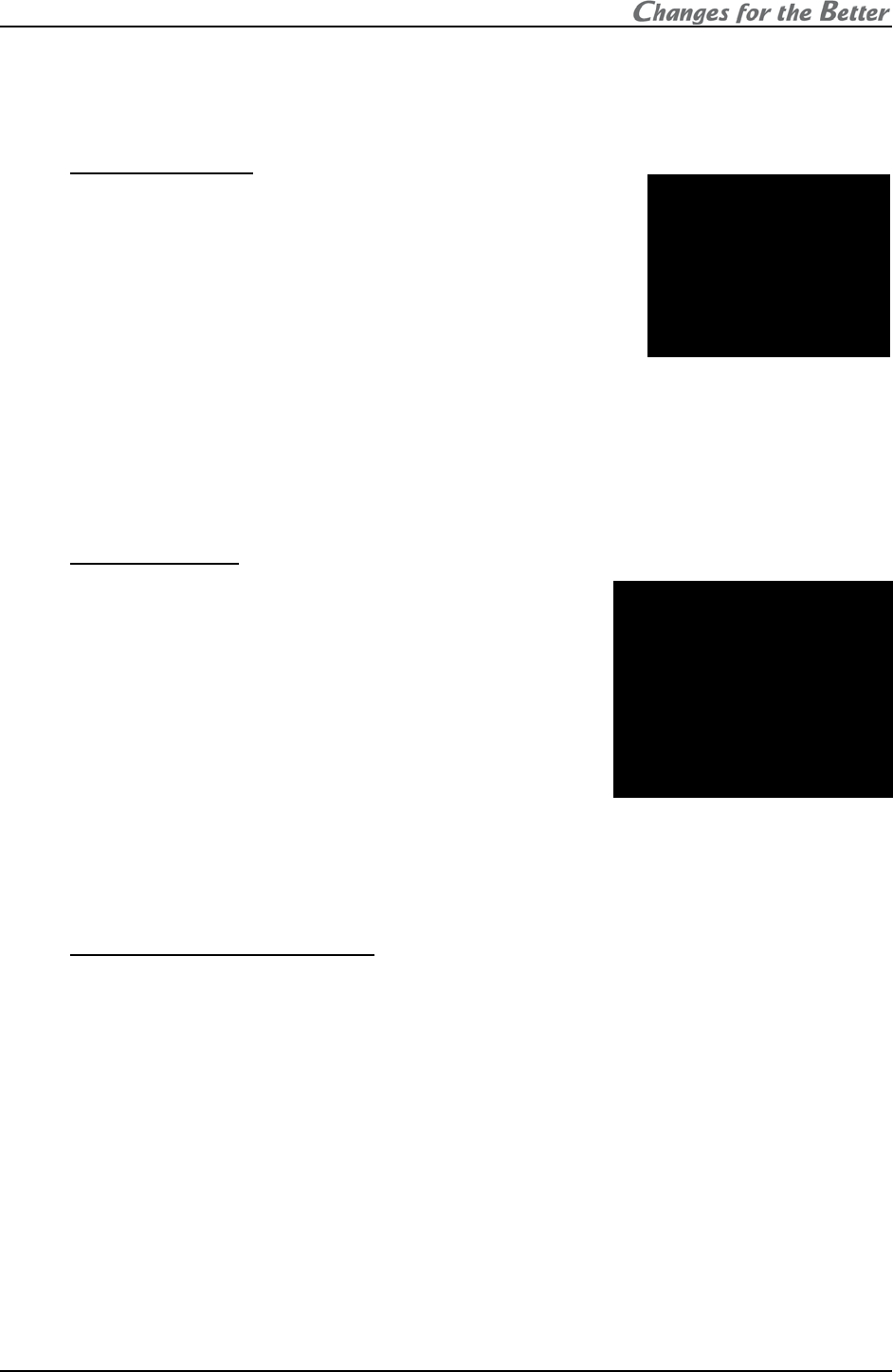
REV 2.4
57
INPUT PORT
A
NALOG
DIGITAL
S.ANALOG
S.DIGITAL
COMPOSITE
Y/C
1.7. Input memory setting (for the input board)
Press [MENU1] button to display the input memory menus. You can exit the menu by [ESC] button.
1.7.1. Input port selecting
Input ports can be switched while any menus or test patterns are
not displayed.
[Procedure]
1. Press [INPUT A] button to display the input port selecting
menu.
2. Select an input port by up/down buttons and press [ENTER]
button to change.
• With the RGB input board, S.ANALOG and S.DIGITAL can
be selective.
• With the video input board, COMPOSITE and Y/C additionally will be active.
3. Press [ESC] button to exit the menu.
The current input port is also displayed in the status information area on screen in advanced
mode.
1.7.2. Expansion setting
To adjust the input signal, set its horizontal and vertical
expansion rate to 100 % to display the full size of effective
input signal area on screen.
[Procedure]
1. Press [MENU2] button to enter the display memory menu.
2. Select H.DISPLAY POS. and change it to 1/1 by left/right
button.
3. Select V.DISPLAY POS. and change it to 1/1 by left/right
button.
4. Exit the menu by [ESC] button.
Note: when you change H.SIZE or V.SIZE (chapter
1.7.4.4, on
page
59) in the input memory menu, the H.DISPLAY POS and V.DISPLAY POS should be 1/1 in
advance.
1.7.3. Automatic input signal scanning
While an input memory menu displaying, [NORMAL] button executes the automatic input signal
scanning. It searches and displays a signal with a suitable sync frequency in the default memory
(preset signals) and in registered input memories.
If multiple signals have a suitable frequency to display, every [NORMAL] button pressing
switches the selected signal.
[Procedure]
1. Press [MENU1] button to display the input memory menu.
3. Press [NORMAL] button several times till the correct image is displayed.
If an incorrect image is displayed, perform signal adjustments in the next chapter.
Note:
When the incorrect image is still displayed even after the adjustments, the signal does not
comply with the available input signal list (chapter
3.7, on page 94).
Display memory menu
S.ANALOG ID01
DISPLAY MEMORY UNDEFINE
INPUT MEMORY 1
H.DISPLAY POS 1/1
V.DISPLAY POS 1/1
CROP
DISPLAY
OUTPUT DISABLE
SCREEN MODE NORMAL
Input port selecting menu


















